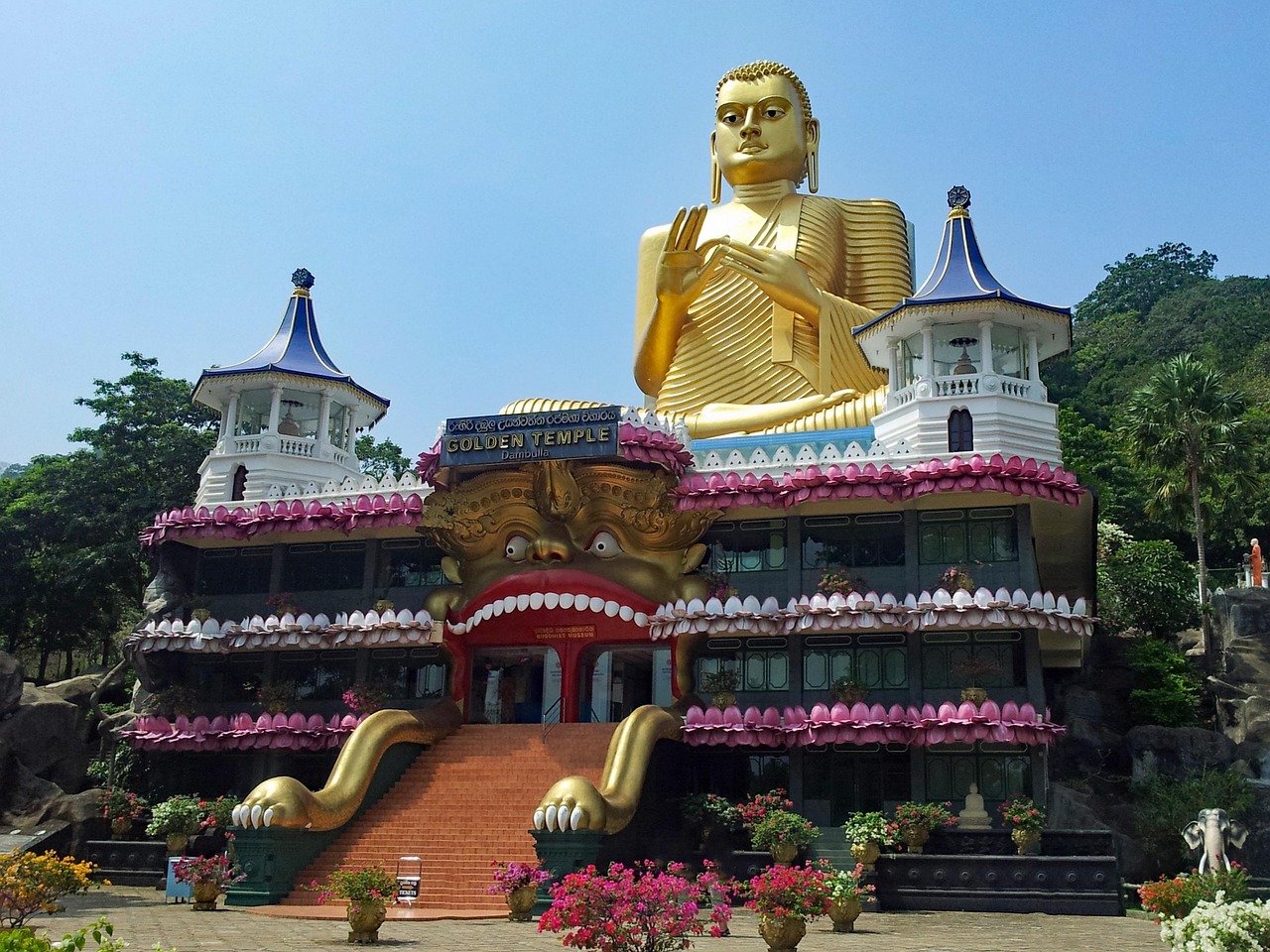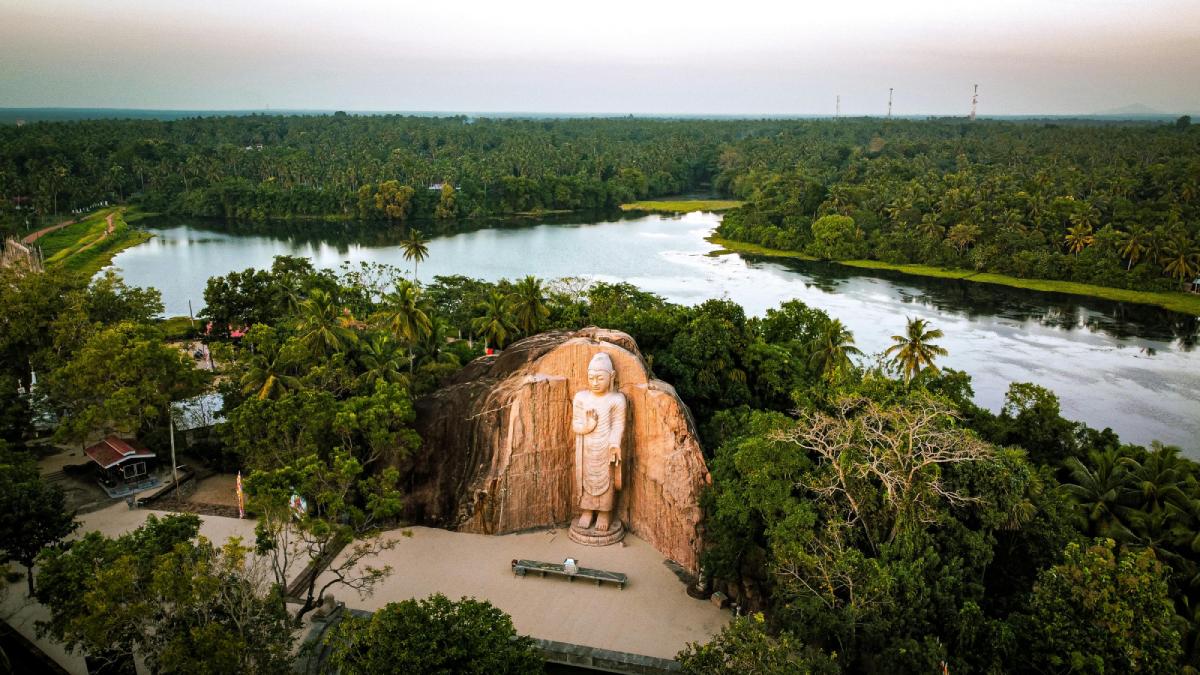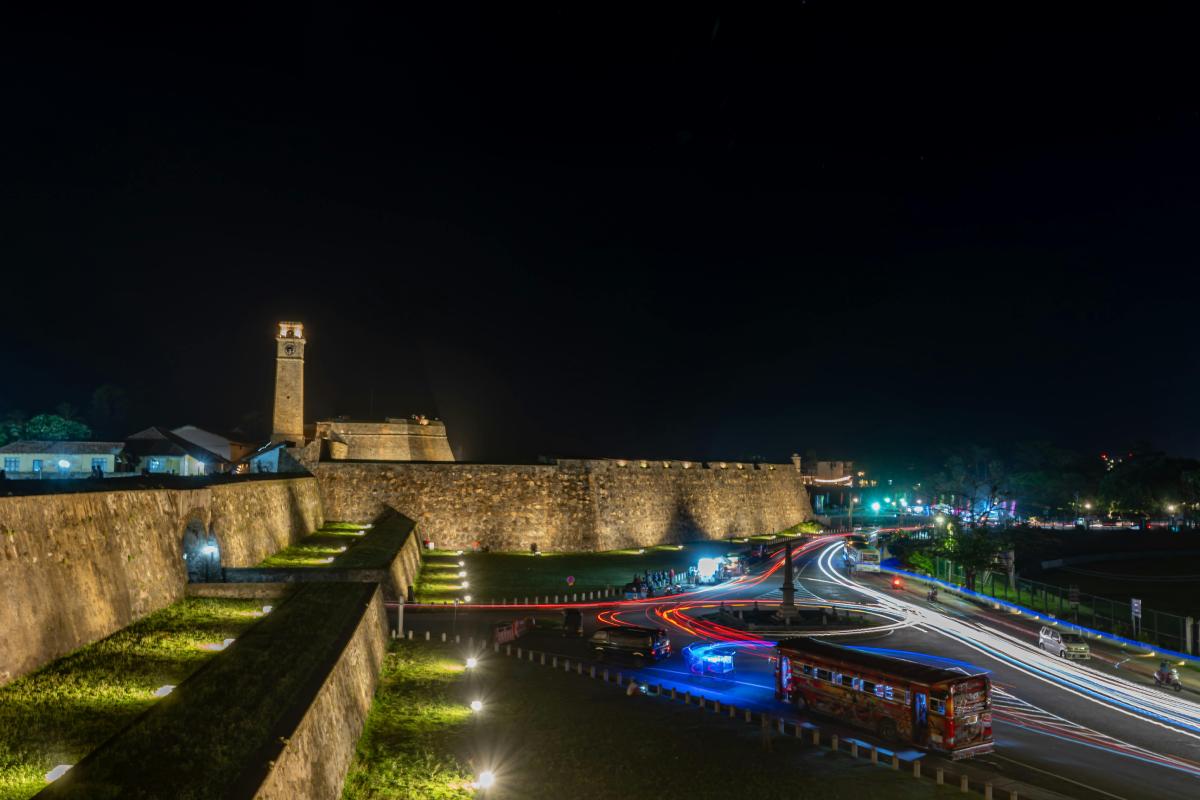Nestled in the heart of Sri Lanka’s Cultural Triangle, Dambulla stands as one of the island nation’s most captivating destinations, where ancient history meets natural beauty in spectacular fashion. This small city in the Central Province has earned its place as a UNESCO World Heritage Site, drawing travelers from around the globe to witness its remarkable cave temples, stunning landscapes, and rich cultural heritage. Discovering Dambulla Sri Lanka Ancient Golden City.
The Crown Jewel: Dambulla Sri Lanka Ancient Golden City
The star attraction of Dambulla is undoubtedly the magnificent cave temple complex, known locally as the Golden Temple of Dambulla. Perched atop a massive 160-meter high rock outcrop, this sacred site represents over 2,000 years of continuous religious devotion and artistic achievement. The complex consists of five main caves, each transformed into elaborate shrines that house an incredible collection of Buddhist art and statuary.
The journey to the caves begins with a scenic climb up well-maintained stone steps, offering breathtaking views of the surrounding countryside. As you ascend, the anticipation builds, knowing that you’re following in the footsteps of countless pilgrims who have made this sacred journey for millennia.
Cave One: Devaraja Lena (Temple of the King of Gods)
The first cave, known as Devaraja Lena, immediately sets the tone for the spiritual experience ahead. This cave features a magnificent 14-meter-long reclining Buddha statue carved directly from the rock face. The serene expression on the Buddha’s face, depicted in the moment of entering Nirvana, creates an atmosphere of profound peace and contemplation. The cave’s walls are adorned with intricate frescoes depicting scenes from Buddhist mythology and the life of the Buddha.
Cave Two: Maharaja Lena (Temple of the Great Kings)
The second cave is the largest and most impressive of the complex. Here, visitors encounter over 150 statues, including standing and seated Buddha figures, as well as statues of King Vattagamani Abhaya, who first took refuge in these caves, and King Nissanka Malla, who later gilded the caves. The ceiling is covered with elaborate paintings that tell the story of Buddha’s enlightenment and various Jataka tales. The artistic detail is extraordinary, with every surface utilized to create a comprehensive visual narrative of Buddhist philosophy.
Cave Three: Maha Alut Viharaya (Great New Temple)
The third cave, built during the 18th century under the patronage of King Kirti Sri Rajasinha, showcases more recent artistic traditions while maintaining the sacred atmosphere of the older caves. This cave features 50 Buddha statues and elaborate paintings that demonstrate the evolution of Buddhist art in Sri Lanka. The vibrant colors and detailed brushwork reflect the skilled craftsmanship of Kandyan period artists.
Cave Four: Paccima Viharaya (Western Temple)
The fourth cave, though smaller than the others, contains significant historical artifacts including ancient Buddhist texts and meditation areas used by monks for centuries. The intimate setting of this cave provides a more personal spiritual experience, allowing visitors to appreciate the contemplative nature of Buddhist practice.
Cave Five: Devana Alut Viharaya (Second New Temple)
The fifth and final cave was converted from a storage area into a shrine relatively recently. While it may lack the ancient grandeur of the first three caves, it demonstrates the living tradition of Buddhist worship that continues to this day in Dambulla.
Historical Significance and Cultural Heritage
The historical importance of Dambulla extends far beyond its artistic treasures. The site served as a crucial refuge for King Vattagamani Abhaya during the 1st century BCE when he was forced to flee from invading South Indian forces. After regaining his kingdom, the grateful king commissioned the transformation of these natural caves into magnificent temples, beginning a tradition of royal patronage that would continue for over two millennia.
Throughout Sri Lankan history, successive rulers have contributed to the site’s development, adding new paintings, sculptures, and architectural elements. This continuous evolution makes Dambulla a living museum of Sri Lankan Buddhist art, where different periods and styles coexist harmoniously. The site represents the longest period of continuous use of any Buddhist temple complex in Sri Lanka, making it invaluable for understanding the island’s religious and cultural development.
The Golden Temple: A Modern Addition
At the base of the rock complex stands the imposing Golden Temple, a modern addition that serves as both a museum and a gateway to the ancient caves above. This gleaming structure, topped with a massive golden Buddha statue, houses an extensive collection of Buddhist artifacts, historical exhibits, and educational displays that provide essential context for understanding the significance of the cave temples.
The museum’s exhibits trace the development of Buddhism in Sri Lanka, the artistic traditions of the island, and the specific history of the Dambulla site. Interactive displays and detailed explanations help visitors appreciate the religious and cultural significance of what they’ll experience in the caves above. The building itself, with its distinctive architecture and prominent golden facade, has become an iconic symbol of modern Dambulla.
Natural Beauty and Surroundings
Beyond its religious significance, Dambulla offers visitors spectacular natural beauty. The region is characterized by dramatic rock formations, lush tropical vegetation, and panoramic views that extend across the central plains of Sri Lanka. The area around the cave complex is home to diverse wildlife, including various bird species, monkeys, and tropical flora that create a rich ecosystem.
The views from the cave complex are particularly stunning during sunrise and sunset, when the golden light illuminates the surrounding landscape and creates perfect conditions for photography. The vantage point offers sweeping views of ancient irrigation systems, traditional villages, and the distant mountains of the central highlands.
Sigiriya: The Perfect Companion
Dambulla’s location makes it an ideal base for exploring other attractions in Sri Lanka’s Cultural Triangle, most notably the nearby Sigiriya Rock Fortress. Just 19 kilometers away, Sigiriya represents another pinnacle of ancient Sri Lankan achievement, featuring the remains of a 5th-century palace complex built atop a massive rock outcrop.
The combination of Dambulla and Sigiriya creates a compelling narrative of Sri Lankan history, art, and architecture. Many visitors choose to explore both sites during their stay in the region, as they complement each other perfectly and provide comprehensive insight into the island’s ancient civilizations.
Practical Information for Visitors
Getting There
Dambulla is easily accessible by road from major Sri Lankan cities. The journey from Colombo takes approximately 3-4 hours by car or bus, while the trip from Kandy can be completed in about 2 hours. The town is well-connected by public transportation, with regular bus services running from major cities throughout the day.
Best Time to Visit
The ideal time to visit Dambulla is during the dry season, which typically runs from May to September and December to March. During these periods, the weather is more predictable, with less chance of rain disrupting your exploration of the outdoor sites. However, the caves can be visited year-round, as they provide shelter from the elements.
What to Bring
Visitors should come prepared for the climb to the caves with comfortable walking shoes and appropriate clothing. Since this is a sacred site, modest dress is required – shoulders and knees should be covered, and shoes must be removed before entering the caves. Bringing a small flashlight can be helpful for examining the detailed artwork in the darker areas of the caves.
Accommodation Options
Dambulla offers a range of accommodation options to suit different budgets and preferences. From luxury resorts that offer stunning views of the surrounding countryside to budget guesthouses that provide comfortable basic amenities, visitors can find suitable lodging for their needs. Many accommodations offer guided tours to the cave complex and other nearby attractions.
Cultural Experiences and Local Life
Visiting Dambulla provides opportunities to experience authentic Sri Lankan culture beyond the famous temples. The town’s markets offer fresh tropical fruits, traditional handicrafts, and local textiles. The surrounding villages maintain traditional ways of life, with rice cultivation, small-scale farming, and artisanal crafts continuing as they have for generations.
Local restaurants serve authentic Sri Lankan cuisine, featuring rice and curry dishes, fresh seafood, and tropical fruits. The flavors are distinctive and often quite spicy, reflecting the island’s position as a historic center of the spice trade. Participating in a traditional Sri Lankan meal provides insight into the local culture and hospitality.
Conservation and Preservation
The designation of Dambulla as a UNESCO World Heritage Site reflects the international recognition of its cultural and historical significance. Ongoing conservation efforts work to preserve the ancient artwork and maintain the structural integrity of the caves while accommodating the thousands of visitors who come to experience this remarkable site each year.
These preservation efforts face various challenges, including weathering, the impact of tourism, and the need to balance conservation with accessibility. The site management works closely with international conservation organizations to ensure that future generations will be able to appreciate the artistic and spiritual treasures of Dambulla.
Conclusion
Dambulla represents one of Sri Lanka’s most remarkable achievements, where natural beauty, artistic excellence, and spiritual devotion combine to create an unforgettable experience. The cave temple complex stands as a testament to the island’s rich Buddhist heritage and the skill of its ancient artists and craftsmen.
Whether you’re drawn by the historical significance, the artistic treasures, or the spiritual atmosphere, Dambulla offers a profound and moving experience that connects visitors with over two millennia of human devotion and creativity. The site’s combination of natural beauty, cultural significance, and artistic achievement makes it an essential destination for anyone seeking to understand the depth and richness of Sri Lankan civilization.
As you plan your visit to this ancient golden city, prepare to be transformed by an experience that engages all the senses and provides lasting memories of one of the world’s most remarkable sacred sites. Dambulla is not just a destination to visit; it’s a journey through time that reveals the enduring power of faith, art, and human creativity.


